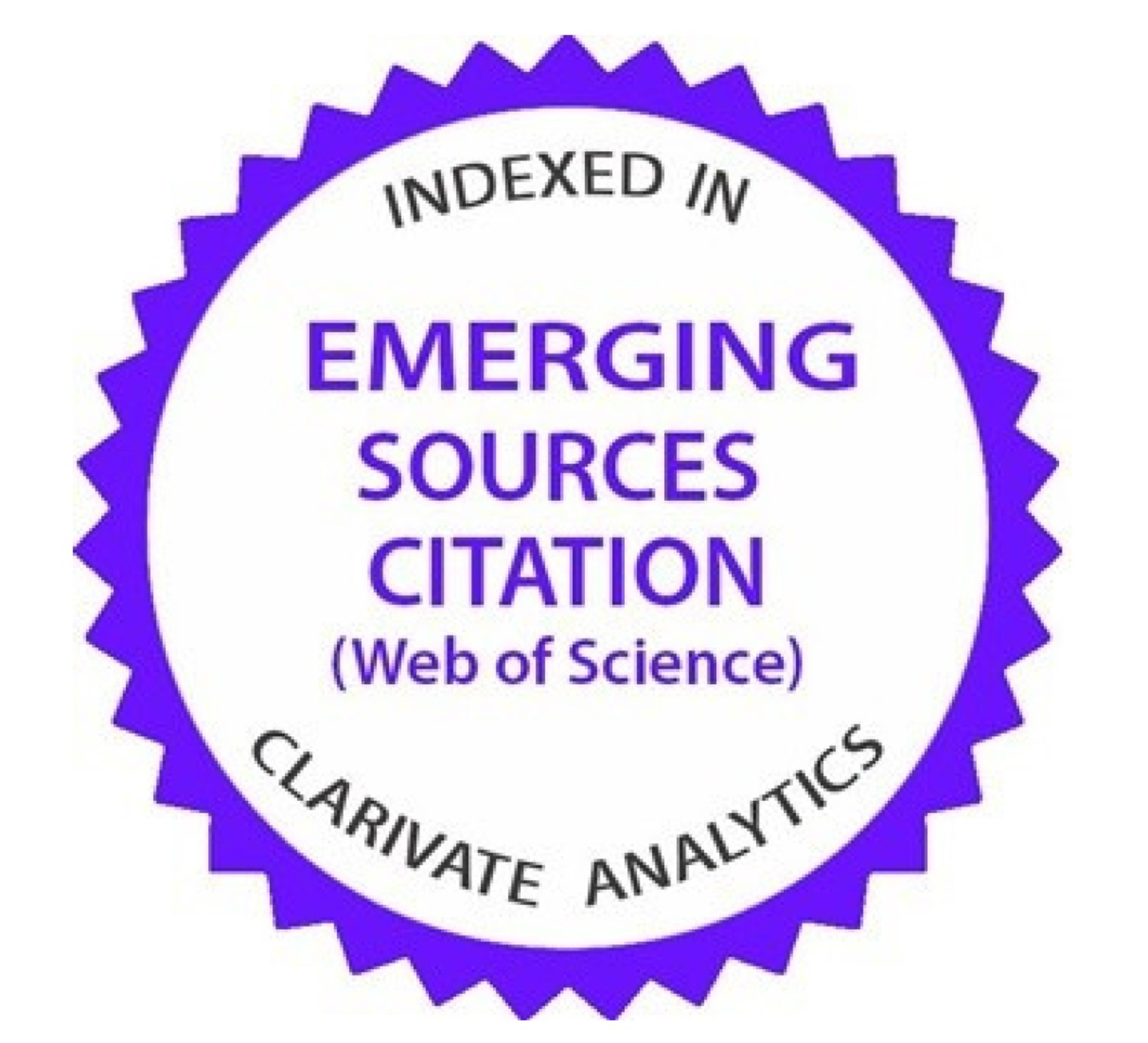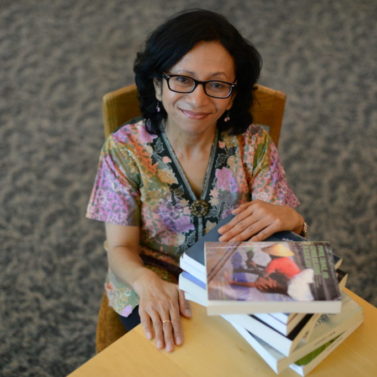Diffusion of artificial intelligence across Indonesia: Digital disparities, local contexts, and policy implications
Downloads
Digital literacy across the urban–rural divide in Indonesia plays a significant role in the adoption/implementation of AI. This study attempts to investigate the principal factors behind AI introduction within a descriptive qualitative study and collaborative case study design. The current study is qualitative, using semi-structured interviews with 180 informants conducted in 36 communities from eight key islands during the period of October to December 2024. The findings indicate that rural areas lag behind urban areas in terms of infrastructure, digital literacy readiness and perceived technological complexity, whereas urban areas benefit from the vibrant ecosystems, institutional support as well as accumulation of training programs. Any vision for digital transformation should be joined up and include increased infrastructure investment, investment in community based digital literacy programs as well as development of AI applications that are locally relevant and culturally sensitive. These results elaborate on the Diffusion of Innovations Theory as articulated by Rogers, showing how infrastructural and sociocultural contexts interact in the adoption of technology, while also offering new perspectives for policy and practice in contrasting low and middle-income contexts.
Abdulai AR, Tetteh Quarshie P, Duncan E, & Fraser E (2023) Is agricultural digitization a reality among smallholder farmers in Africa? Unpacking farmers’ lived realities of engagement with digital tools and services in rural Northern Ghana. Agriculture & Food Security 12 (1):11. https://doi.org/10.1186/s40066-023-00416-6.
Agarwal P, Swami S, & Malhotra SK (2024) Artificial intelligence adoption in the post COVID-19 new-normal and role of smart technologies in transforming business: a review. Journal of Science and Technology Policy Management 15 (3):506-529. https://doi.org/10.1108/JSTPM-08-2021-0122.
Agyekum TP, Antwi‐Agyei P, Dougill AJ, & Stringer LC (2024) Benefits and barriers to the adoption of climate‐smart agriculture practices in West Africa: a systematic review. Climate Resilience and Sustainability 3 (3):e279. https://doi.org/10.1002/cli2.79.
Ahmed ST, Basha SM, Ramachandran M, Daneshmand M, & Gandomi AH (2023) An edge-AI-enabled autonomous connected ambulance-route resource recommendation protocol (ACA-R3) for eHealth in smart cities. IEEE Internet of Things Journal 10 (13):11497-11506. https://doi.org/10.1109/JIOT.2023.3243235.
Aldoseri A, Al-Khalifa KN, & Hamouda AM (2024) AI-powered innovation in digital transformation: Key pillars and industry impact. Sustainability 16 (5):1790. https://doi.org/10.3390/su16051790.
Amin A, Bhuiyan MRI, Hossain R, Molla C, Poli TA, & Milon MNU (2024) The adoption of Industry 4.0 technologies by using the technology organizational environment framework: The mediating role to manufacturing performance in a developing country. Business Strategy & Development 7 (2):e363. https://doi.org/10.1002/bsd2.363.
Achruh A, Rapi M, Rusdi M, & Idris R (2024) Challenges and opportunities of artificial intelligence adoption in Islamic education in Indonesian higher education institutions. International Journal of Learning, Teaching and Educational Research 23 (11). https://doi.org/10.26803/ijlter.23.11.22
Bisheko MJ & Rejikumar G (2023) Major barriers to adoption of improved postharvest technologies among smallholder farmers in sub-Saharan Africa and South Asia: a systematic literature review. World Development Sustainability 2: 100070. https://doi.org/10.1016/j.wds.2023.100070.
Campion A, Gasco-Hernandez M, Jankin Mikhaylov S, & Esteve M (2022) Overcoming the Challenges of Collaboratively Adopting Artificial Intelligence in the Public Sector. Social Science Computer Review 40 (2):462-477. https://doi.org/10.1177/0894439320979953.
Celik I (2023) Exploring the determinants of artificial intelligence (Ai) literacy: Digital divide, computational thinking, cognitive absorption. Telematics and Informatics 83: 102026. https://doi.org/10.1016/j.tele.2023.102026.
Correa T & Pavez I (2016) Digital inclusion in rural areas: A qualitative exploration of challenges faced by people from isolated communities. Journal of Computer-Mediated Communication 21 (3):247-263. https://doi.org/10.1111/jcc4.12154.
Curtis M (2020) Toward understanding secondary teachers’ decisions to adopt geospatial technologies: An examination of Everett Rogers’ diffusion of innovation framework. Journal of Geography 119 (5):147-158. https://doi.org/10.1080/00221341.2020.1784252.
Damioli G, Van Roy V, & Vertesy D (2021) The impact of artificial intelligence on labor productivity. Eurasian Business Review 11 (1):1-25. https://doi.org/10.1007/s40821-020-00172-8.
Da Silva RGL (2024) The advancement of artificial intelligence in biomedical research and health innovation: Challenges and opportunities in emerging economies. Globalization and Health 20 (1):44. https://doi.org/10.1186/s12992-024-01049-5.
Davison RM & Joia L (2023) Digital transformation in Latin America: Challenges and opportunities. The Electronic Journal of Information Systems in Developing Countries 89 (2):e12258. https://doi.org/10.1111/isj.12528.
Fernandes JG (2022) Artificial intelligence in telemedicine. In: Artificial Intelligence in Medicine. Cham: Springer International Publishing. 1219-1227.
Fu H, Guan J, Wang R, Kong L, & Dai Q (2024) How does digitalization affect the urban-rural disparity at different disparity levels: A Bayesian Quantile Regression approach. Technology in Society 78: 102633. https://doi.org/10.1016/j.techsoc.2024.102633.
Furman J & Seamans R (2019) AI and the economy. Innovation policy and the economy 19 (1):161-191.
Gao X & Feng H (2023) AI-driven productivity gains: Artificial intelligence and firm productivity. Sustainability 15 (11):8934. https://doi.org/10.3390/su15118934.
Gómez-Carmona O, Buján-Carballal D, Casado-Mansilla D, López-de-Ipiña D, Cano-Benito J, Cimmino A, & Bujalkova N (2023) Mind the gap: The AURORAL ecosystem for the digital transformation of smart communities and rural areas. Technology in Society 74: 102304. https://doi.org/10.1016/j.techsoc.2023.102304.
Guo J & Li B (2018) The application of medical artificial intelligence technology in rural areas of developing countries. Health Equity 2 (1):174-181. https://doi.org/10.1089/heq.2018.0037.
Heeks R (2009) The ICT4D 2.0 manifesto: Where next for ICTs and international development? Development Informatics Working Paper (42).
Hidayat AR, Onitsuka K, Sianipar CP, Basu M, & Hoshino S (2023) To migrate or not to migrate: Internet use and migration intention among rural youth in developing countries (case of Malang, Indonesia). Digital Geography and Society 4: 100052. https://doi.org/10.1016/j.diggeo.2023.100052.
Katal N (2024) Ai-driven healthcare services and infrastructure in smart cities. In: Smart Cities. Boca Raton, Florida: CRC Press. 150-170.
Keith AJ (2024) Governance of artificial intelligence in Southeast Asia. Global Policy 15 (5):937-954. https://doi.org/10.1111/1758-5899.13458.
Kurniawan AB (2024) Human rights in education implication schema based on the study of the UN Economic and Social Council’s 2030 agenda. Masyarakat, Kebudayaan dan Politik 37 (3):257-269. https://doi.org/10.20473/mkp.V37I32024.257-269.
Lewis-Smith H, Garbett KM, Chaudhry A, Dhillon M, Shroff H, White P, & Diedrichs PC (2023) Evaluating a body image school-based intervention in India: A randomized controlled trial. Body Image 44: 148-156. https://doi.org/10.1016/j.bodyim.2022.12.006.
Makridakis S (2017) The forthcoming Artificial Intelligence (AI) revolution: Its impact on society and firms. Futures 90: 46-60. https://doi.org/10.1016/j.futures.2017.03.006.
Mustafa MY, Tlili A, Lampropoulos G, Huang R, Jandrić P, Zhao J, & Saqr M (2024) A systematic review of literature reviews on artificial intelligence in education (AIED): A roadmap to a future research agenda. Smart Learning Environments 11 (1):59. https://doi.org/10.1186/s40561-024-00350-5.
Nguyen X-P, Zhang W, Li X, Aljunied M, Hu Z, Shen C, & Bing L (2023) SeaLLMs – Large language models for Southeast Asia. arXiv Preprint arXiv:2312.00738. https://doi.org/10.48550/arXiv.2312.00738.
Novela I, Sawitri HSR, Riani AL, Istiqomah S, Suprapti AR, & Harsono M (2024) Digital literacy on SME business performance and the mediating role of entrepreneurial skills. Jurnal Aplikasi Bisnis Dan Manajemen (JABM) 10 (3):847-847. https://doi.org/10.17358/jabm.10.3.847.
Omotayo AO, Adediran SA, Omotoso AB, Olagunju KO, & Omotayo OP (2025) Artificial intelligence in agriculture: Ethics, impact possibilities, and pathways for policy. Computers and Electronics in Agriculture 239: 110927. https://doi.org/10.1016/j.compag.2025.110927.
Ono GN, Obi EC, Chiaghana C, & Ezegwu D (2024) Digital divide and access: Addressing disparities in Artificial Intelligence (AI) health information for Nigerian rural communities. Social Science Research 10 (3). https://journals.aphriapub.com/index.php/SSR/article/view/2755.
Pepinsky TB, Abtahian MR, & Cohn AC (2024) Urbanization, ethnic diversity, and language shift in Indonesia. Journal of Multilingual and Multicultural Development 45 (7):2503-2521. https://doi.org/10.1080/01434632.2022.2055761.
Pradana IPYB, Susanto E, & Kumorotomo W (2022) Analyzing the critical factors for innovation sustainability in the public sector: evidence from Indonesia. International Journal of Public Sector Management 35 (7):733-748. https://doi.org/10.1108/IJPSM-02-2022-0044.
Ramadhani R, Suswanta S, & Shaddiq S (2021) E-Marketing of village tourism development strategy (Case study in the tourist village puncak sosok). Journal of Robotics and Control (JRC) 2 (2):72-77. https://doi.org/10.18196/jrc.2255.
Robinson L, Cotten SR, Ono H, Quan-Haase A, Mesch G, Chen W, & Stern MJ (2015) Digital inequalities and why they matter. Information, Communication & Society 18 (5):569-582. https://doi.org/10.1080/1369118X.2015.1012532.
Rogers EM (2003) Diffusion of Innovations (5th ed). New York: Free Press.
Septiandri A, Constantinides M, & Quercia D (2025) AI and the economic divide: How Artificial Intelligence could widen the divide in the U.S. EPJ Data Science 14 (1):33. https://doi.org/10.1140/epjds/s13688-025-00547-9.
Sein MK, Thapa D, Hatakka M, & Sæbø Ø (2019) A holistic perspective on the theoretical foundations for ICT4D research. Information Technology for Development 25 (1):7-25. https://doi.org/10.1080/02681102.2018.1503589.
Sieber R, Brandusescu A, Adu-Daako A, & Sangiambut S (2024) Who are the publics engaging in AI? Public Understanding of Science 33 (5):634-653. https://doi.org/10.1177/09636625231219853.
Shen YT, Chen L, Yue WW, & Xu HX (2021) Digital technology-based telemedicine for the COVID-19 pandemic. Frontiers in medicine 8: 646506. https://doi.org/10.3389/fmed.2021.646506.
Tim Y, Cui L, & Sheng Z (2021) Digital resilience: How rural communities leapfrogged into sustainable development. Information Systems Journal 31 (2):323-345. https://doi.org/10.1111/isj.12312.
Toyama K (2011) Technology as amplifier in international development. In: Proceedings of the 2011 iConference. 75-82. https://doi.org/10.1145/1940761.1940772.
Utomo KDM & Marianta YIW (2023) The role of social support and spiritual well-being in predicting Internet addiction among Indonesian seminarians. Pastoral Psychology 1-16. https://doi.org/10.1007/s11089-023-01088-6.
Walsham G (2017) ICT4D research: reflections on history and future agenda. Information Technology for Development 23 (1):18-41. https://doi.org/10.1080/02681102.2016.1246406.
Wejnert B (2002) Integrating models of diffusion of innovations: a conceptual framework. Annual Review of Sociology 28 (1):297-326. https://doi.org/10.1146/annurev.soc.28.110601.141051.
Wu G & Peng Q (2024) Bridging the digital divide: Unraveling the determinants of fintech adoption in rural communities. Sage Open 14 (1). https://doi.org/10.1177/21582440241227770.
Wibowo MF, Pyle A, Lim E, Ohde JW, Liu N, & Karlström J (2025) Insights into the current and future state of AI adoption within health systems in Southeast Asia: Cross-sectional qualitative study. Journal of Medical Internet Research 27: e71591. https://doi.org/10.2196/71591.
Yang J & Lou K (2024) Exploring the nexus of self-efficacy in digital literacy and technology acceptance: Insights from L2 Chinese teachers. Asia Pacific Journal of Education 1–19. https://doi.org/10.1080/02188791.2024.2336247.
Yanti D, Heryadi DY, Cakranegara PA, & Kadyrov M (2023) Developing rural communication through digital innovation for village tourism. Jurnal Studi Komunikasi 7 (3):696-712.
Ye J, He L, & Beestrum M (2023) Implications for implementation and adoption of telehealth in developing countries: a systematic review of China’s practices and experiences. NPJ digital medicine 6 (1):174. https://doi.org/10.1038/s41746-023-00908-6.
Yuen KF, Cai L, Qi G, & Wang X (2021) Factors influencing autonomous vehicle adoption: An application of the technology acceptance model and innovation diffusion theory. Technology Analysis & Strategic Management 33 (5):505-519. https://doi.org/10.1080/09537325.2020.1826423.
Zhang K & Aslan AB (2021) AI technologies for education: Recent research & future directions. Computers and education: Artificial intelligence 2: 100025. https://doi.org/10.1016/j.caeai.2021.100025.

This work is licensed under a Creative Commons Attribution-NonCommercial-ShareAlike 4.0 International License.
Copyright of this journal is possession of Editorial Board and Journal Manager, by the knowledge of the author, while the moral right of the publication belongs to the author.
The formal legal aspect of journal publication accessibility refers to Creative Commons Attribution-NonCommercial-ShareAlike (CC BY-NC-SA), implies that publication can be used for non-commercial purposes in its original form (cannot be modified).
Every publication (printed/electronic) are open access for educational purposes, research, and library. Other than the aims mentioned above, the editorial board is not responsible for copyright violation.
















